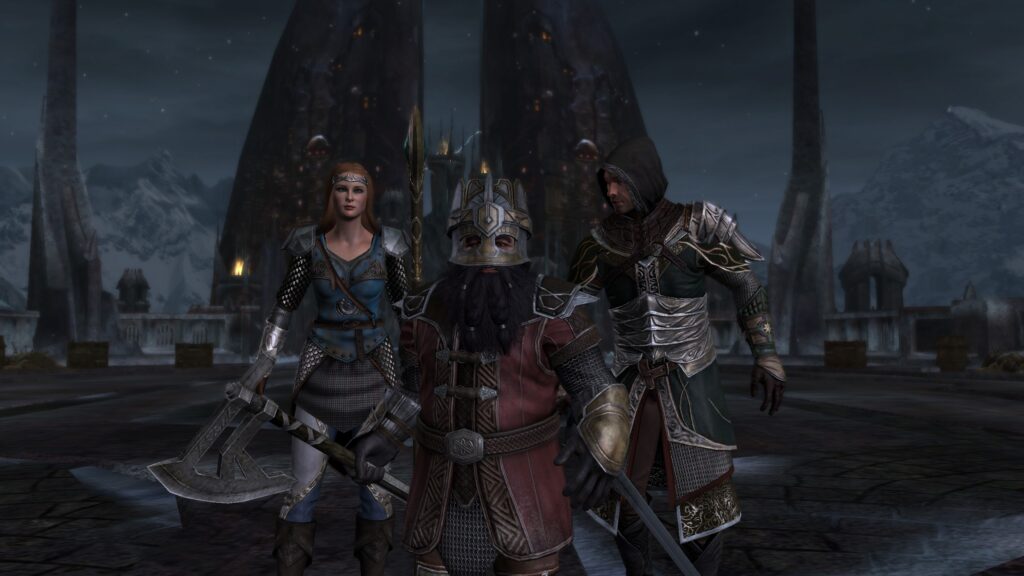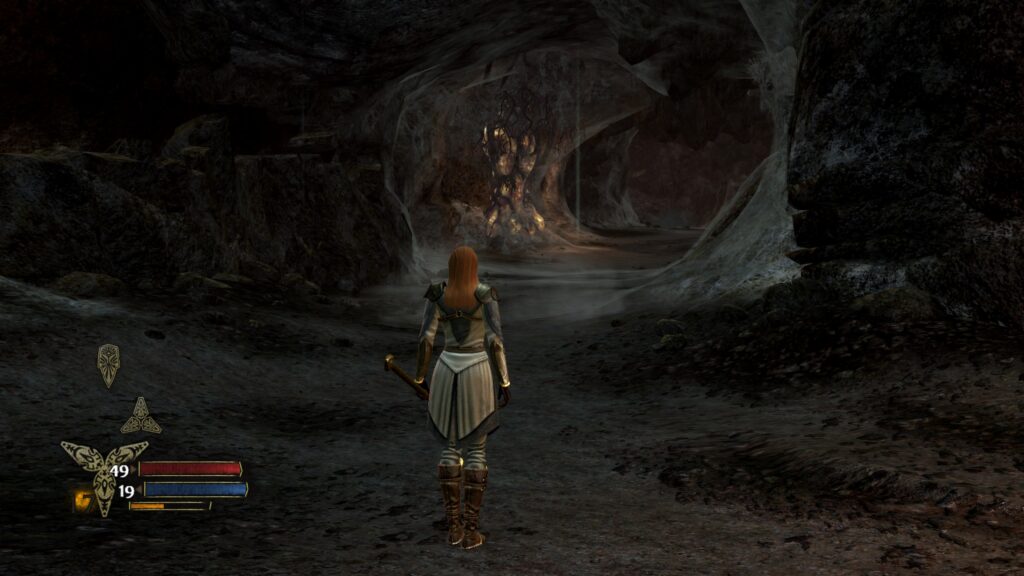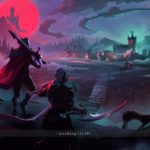I bought Snowblind Studios’ final PlayStation 2 RPG, Justice League Heroes, and I liked it fine. But I knew they’d made one more game under their own name before being swallowed up and spit out by a conglomerate, on a new version of their famous game engine for the PS3, one of the XBoxes, and Steam. That game was the licensed The Lord of the Rings: War in the North.
Like the MMO, Lord of the Rings Online, War in the North concerns a group of heroes who are helping the Fellowship indirectly; in this case, by keeping one of Sauron’s chief lieutenants, Agandaûr, busy in the North instead of being free to open another front in the War of the Ring. Agandaûr was a descendant of Numenorians who left Numenor before its destruction and pledged themselves to Sauron.
The game begins with choosing between three heroes — the melee Dwarf Farin, the spell casting Elf Andriel, or the ranger Dunedain Eradan. If you play alone, the game AI controls the others, and you can command them to use defensive or offensive strategies. Like most or all of Snowblind’s RPGs, you can invite friends to take on the other roles.
All characters are fully voiced. Along with the main trio, you’ll meet Elrond and his sons, Bilbo, Gandalf, Radagast — whom you’ll save from a spider, which he says gives him more respect for flies — several Eagles, one of whom will join your party as a non-playable character fairly early in the game — and several NPCs new to the game.
Locations go from the Prancing Pony in Bree to the ruined Citadel of Fornost and then points beyond, including Mirkwood, Rivendell, a Dwarf city in the north, and a dragon’s lair — among others.
Levels are split into several sections. At section breaks, you can see the character kill stats for the previous level, and have the opportunity to change which character you are controlling. AI-controlled characters handle their own equipment and leveling, but when you choose one, it starts off from where you left it, and you’ll have to bring their stats, abilities and gear up to snuff. Luckily, all characters share a common inventory.
You can trade items between characters, and the AI-controlled characters will wield/wear what you give them if it’s better than what they have on. But when you take control, they will dump all of that into the inventory and you’ll have to manually equip it.
The combat portion of each level typically deals with waves of weak attackers with strong interspersed while ranged attackers try to pick you off from a distance. All three characters have both melee and ranged attacks. There is typically a boss battle at the end of a location’s plot, but sometimes they mix it up by having you protect NPCs from waves of attackers. This is sometimes problematic as NPCs do not benefit from your heals. It’d be too easy if they did, I guess.
The game is fairly short; I finished my first playthrough of the game in less than 20 hours in “easy” mode. The game immediately promoted me to “normal” mode and asked me to play through again. Why not? I played through the first adventure location, Fornost, just to see how it was the second time around. I rotated between the three characters as I went through. It was fun being a little OP second time around, even though the monsters were a little tougher.
All the levels have secrets to find; each of the three characters finds their own secrets — enchanted walls for Andriel, crumbling walls for Fanir, and hidden Ranger caches for Eradan. You’re scored on how many secrets you managed to find at the end of the level, so you won’t find them all unless you’re playing with two friends.
Andriel also has the ability to harvest plants and make potions and cakes from them that can be beneficial. Aside from the health and power potions, I didn’t find much need of the others in the easy playthrough, though I’m sure they’re more critical as the difficulty increases.
And the quests — there are lots of quests. Completing one typically gives you your choice of armor, weapon or accessory themed according to the quest giver. Focusing on completing these quests when you get them is key to getting some very nice early gear. You can return to previous locations to complete quests you didn’t manage to finish. and it’s a good idea to do so.
There’s also optional challenge levels, where you can fight off waves of enemies for some reward; I wasn’t able to complete any to find out what that reward might be. I guess I should go back and try. The first one, defending Lorien from invading goblins, just eventually killed the two AI-controlled characters and mine soon after.
(Yes, you can eventually customize the character you are playing).
If you’re looking for a decent action RPG set in the War of the Rings, you could do worse. It’s a good game with a lot of replayability that does not overstay its welcome.
If you just want to see what the end looks like, here’s the final battle. Lots of spoilers, so… don’t watch if you intend to play.








Hmm, I loved the Snowblind games on console and didn’t realize they’d ever done one that made it to Steam. And I love the setting. Might have to check this one out!
Aww, its no longer available on Steam 🙁
That doth sucketh. Not available on Playstation Plus either. I just had a blog idea…